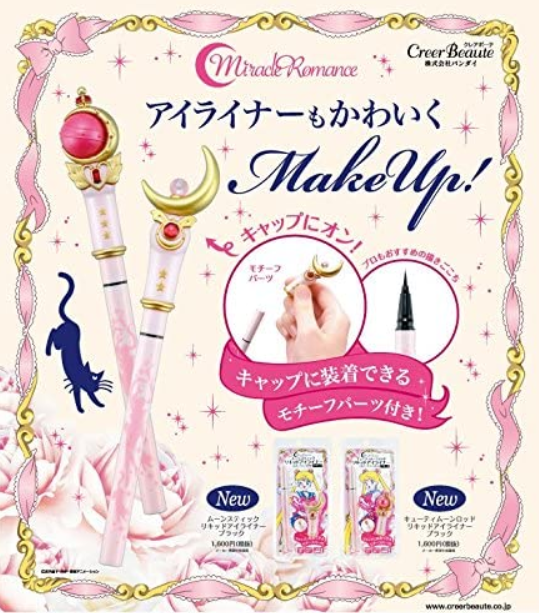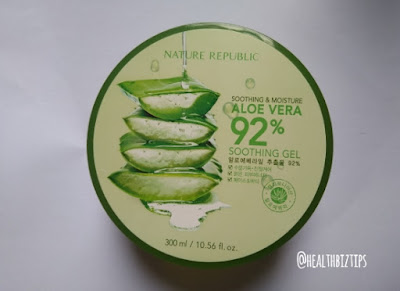Home Remedies for Dysmenorrhea
Home Remedies for Dysmenorrhea / Menstrual cramps
by: Arlene Gentallan
Is there an anxiety and dread that comes along with your monthly period? You're not alone in the battle. Dysmenorrhea is such a common problem that it afflicts 1 in every 4 women. Menstruation can become hard and frustrating when it brings about pain, but instead of resorting to medications which may have untoward side effects, why not try some of nature's best remedy?
What is Dysmenorrhea / Menstrual cramps?
Dysmenorrhea or menstrual cramps is the cramping pain women experience 1-2 days before menstruation begins or while menstruating. Pain is usually felt at pelvis, lower abdomen, lower back, or inner thighs. Severity may vary from mild discomfort to severe pain that interferes with daily activity.
If it's primary dysmenorrhea where there is no underlying pathological condition, pain may usually last for just a few hours but may persist for up to 1-3 days, which may be accompanied by nausea, vomiting, fatigue, diarrhea, and headache. The pain caused by primary dysmenorrhea may lessen as the woman's age advances and may completely stop once she bore her first child.
Secondary dysmenorrhea is caused by a gynecological disorder such as endometriosis, adenomyosis, and PID. It's typical onset is during a woman's adulthood. The pain it causes usually lasts a duration of more than 3 days.
Nature's Ways to Beat Pain:
1. Heat Application
Applying heat to your lower abdomen and pelvic area helps relax your muscle which will then ease your menstrual cramp. You can use hot compress, hot pack, or heating pad. You can also relieve menstrual cramp with a nice hot bath. Pour in a few drops of lavender oil on your bath water for a much relaxing experience.
If in cases when you don't have a handy hot compress with you, you can use a glass or plastic bottle filled with hot water instead. Be sure to use a padding so you won;t burn yourself.
2. Lavender oil
Lavender's clean relaxing fragrant is a good home remedy for dysmenorrhea. The result of a study by Raisi Dehkordi, Hosseini Baharanchi, and Bekhradi shows that
"lavender inhalation was effective in alleviating dysmenorrhea symptoms, suggesting that it could be applied by midwives in a safe manner because of no side effects, simplicity and cost-effectiveness for all patients."
Lavender oil can also be applied topically on the lower abdomen and pelvis to relieve mentrual cramps.
Note: Up yo date, there is not much research done regarding the ingestion of lavender oil. Some people experience negative side effects when taking it by mouth.
3. Chamomile tea
A study publised on ACS's Journal of Agricultural and Food Chemistry shows that intake of 5 glass of German chamomile (Matricaria recutita) every day for 2 weeks results in higher urine levels of hippurate and glycine in it's 14 participants (7 male & 7 female).
Hippurate is a metabolite associated with antibacterial activity. This explains how chamomile tea is able to help the body's immune system fight infectious diseases like common cold. Glycine is an amino acid neurotransmitter associated with muscle relaxation, nerve inhibition and sedation. Thus, alleviating menstrual cramps.
Chamomile's medicinal benefits has been appreciated since the ancient times however it is only just recently that we are beginning to understand it in light of science.
“This is one of a growing number of studies that provide evidence that commonly used natural products really do contain chemicals that may be of medicinal value,” says Elaine Holmes, Ph.D., chemist at Imperial College London.
4. Ginger
Ginger is such a superfood that has a list of health benefits which includes relieving menstrual cramps. In a study by Ozgoli, Goli and Moattar publised on NLM, they concluded that "Ginger was as effective as mefenamic acid and ibuprofen in relieving pain in women with primary dysmenorrhea."
In the said study, 150 students were divided into two groups. One groupd received "250 mg capsules of ginger rhizome powder four times a day for three days from the start of their menstrual period." While the other group "received 250 mg mefenamic acid or 400 mg ibuprofen capsules, respectively, on the same protocol." The pain relief they've obtained from either of the two management were about the same.
Why not try a home made cup of ginger tea? It will also relieve the nausea and vomiting that frequently comes with primary dysmenorrhea.
How to Make a Ginger Tea?
Ingredients:
- 1 cup water
- 1 inch size ginger or 1 teaspoon ginger powder
- 1 teaspoon honey or lime
Instruction:
- Boil 1 cup of water
- Peel and finely chop a 1 inch size ginger
- You may also use 1 tsp ginger powder instead
- Put ginger in the water and simmer for 15 minutes
- You may add a teaspoon of honey or lime for flavor
- Strain, cool, sip and enjoy
5. Peppermint
Peppermint provides a soothing cool relief from a body pains and cramps, including dysmenorhea. It also helps relieve nausea and vomiting. Here's how to use peppermint:
- Apply 1-2 drops peppermint essential oil on your lower abdomen.
- Put a few drops of peppermint essential oil into a cotton and inhale it.
- Make yourself a cup peppermint tea. Ready to use tea bags are available for purchase, but you can also brew your own.
How to make peppermint tea?
Ingredients:
- 1 cup water
- 1 tablespoon dried or fresh peppermint leaves
- 1 teaspoon honey or lime
Instruction:
- Put 1 cup boiling water in a mug
- Add 1 tbsp dried or fresh peppermint leaves
- Cover mug with saucer and steep for 5-10 minutes
- You may add a teaspoon of honey or lime for flavor
- Strain, cool, sip and enjoy
6. Fennel
Fennel has antispasmodic property. There are several researches done to prove it's benefit in relieving menstrual cramps. In a study by Shabnam Omidvar, Sedighe Esmailzadeh, et al. publised on NLM, 50 virgin participants were given either 30 mg fennel extract 4 times a day or placebo from the start of their period. The result showed that fennel is effective in relieving primary dysmenorrhea.
In another study by Namavar Namavar Jahromi, Tartifizadeh A, and Khabnadideh S. publised on NLM, comparison was made between fennel (essense of Fennel fruit with 2% concentration given 25 drops orally every 4 hours) and mefenamic acid (250mg taken orally every 6 hours) in the treatment of primary dysmenorrhea in 30 participants with moderate to severe pain.
The result of the study showed that "The essence of fennel can be used as a safe and effective herbal drug for primary dysmenorrhea, however, it may have a lower potency than mefenamic acid in the dosages used for this study."
How to use Fennel essential oil to relieve menstrual cramps:
- Fennel essential oils is availble for purchase. Simple apply 1-2 drops to your lower abdomen to lessen the pain of dysmenorrhea.
How to make Fennel Tea?
Ingredients:
- 1 cup water
- 1 teaspoon fennel seeds
- 1 teaspoon honey or sugar
Instruction:
- Boil 1 cup of water
- Add 1 tsp fennel seeds
- Simmer for 5-10 minutes
- Strain the mixture
- You may add a teaspoon of honey or sugar for flavor
- Drink and enjoy!
7. Cinnamon
Cinnamon is not just a spice, it's also a home remedy for primary dysmenorrhea. There are lots of culinary dishes involving cinnamon but why not start with a simple tea.
How to make Cinnamon Tea using cinnamon powder?
Ingredients:
- 1 cup water
- 1/4 teaspoon cinnamon powder
- 1 teaspoon honey or sugar
Instruction:
- Pour 1 cup boiling water into a cup
- Add 1/4 tsp cinnamon powder
- Cover mug with saucer and steep for 5-10 minutes
- You may add a teaspoon of honey or sugar for flavor
- Drink and enjoy!
How to make Cinnamon Tea using cinnamon sticks?
Ingredients:
- 1 cup water
- 3 pcs cinnamon stick 3 inch length
- 1 teaspoon honey or sugar
Instruction:
- Pour 1 cup of water in a pot
- Add 3 pcs cinnamon stick (crushed or whole)
- Place under medium low heat for 15 minutes (Do not boil)
- Steep/cool for 5-10 minutes.
- Strain the mixture
- You may add a teaspoon of honey or sugar for flavor
- Drink and enjoy!
How to make Cinnamon Milk Tea?
Ingredients:
- 1 cup milk
- 2 pcs cinnamon stick or 1 teaspoon cinnamon powder
- 1 teaspoon honey or sugar
Instruction:
- Pour 1 cup boiling milk into a mug
- Add 2 pcs cinnamon stick or 1 teaspoon cinnamon powder
- Cover mug with saucer and steep for 5-10 minutes
- You may add a teaspoon of honey or sugar for flavor
- Drink and enjoy!
8. Basil
Basil is a natural pain killer. It can be taken as a tea. You can also roll about 10 pieces fresh basil leaves and chew it to obtain relief from dysmenorrhea. There have been reports that daily consumption of basil can help prevent menstrual cramps.
How to make Basil Tea?
Ingredients:
- 1 cup water
- 2 tablespoon fresh basil leaves or 1 tablesppon dried leaves
- 1 teaspoon honey or sugar
Instruction:
- Pour 1 cup boiling water into a mug
- Add 2 tbsp fresh or 1 tbsp dried basil leaves
- Cover mug with saucer and steep for 5-10 minutes
- You may add a teaspoon of honey or sugar for flavor
- Drink and enjoy!
9. Exercise
Time and again, exercise has been shown to be an indispensable when it comes to combating health issues. Exercise can help ease your menstrual cramps because it triggers production of endorphins which is the body's natural pain killers.
In a study by Yang and Kim published on the United States National Library of Medicine, it shows that a yoga program may help alleviate menstrual cramps.







